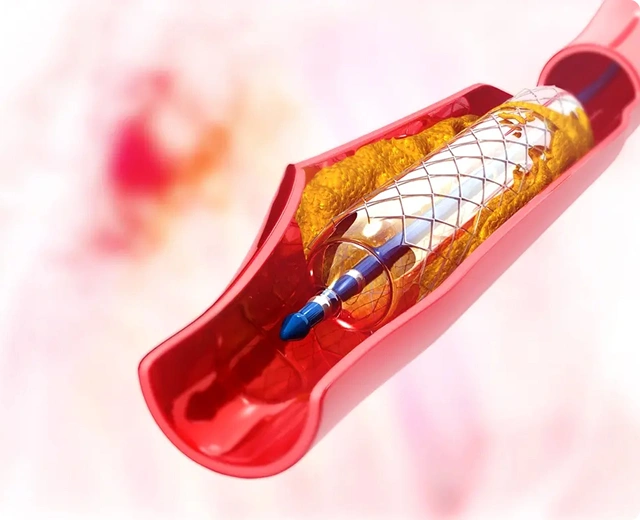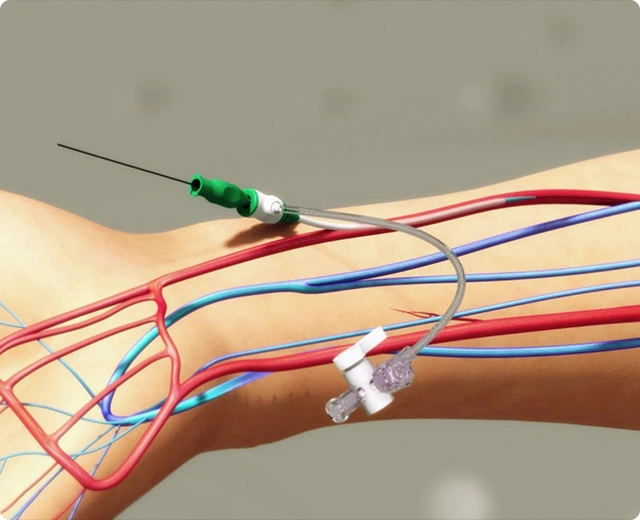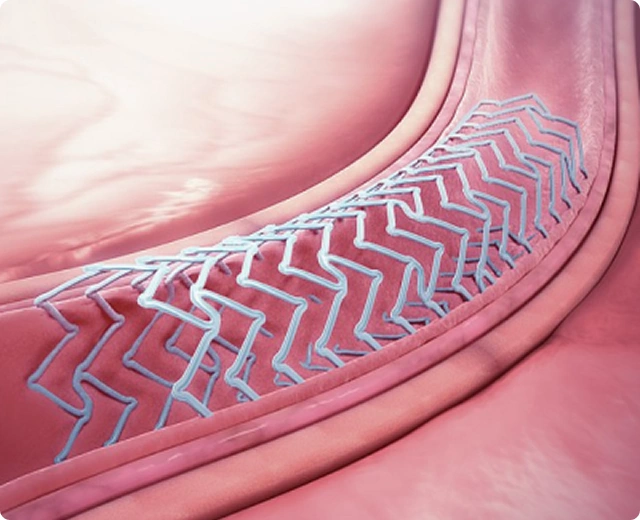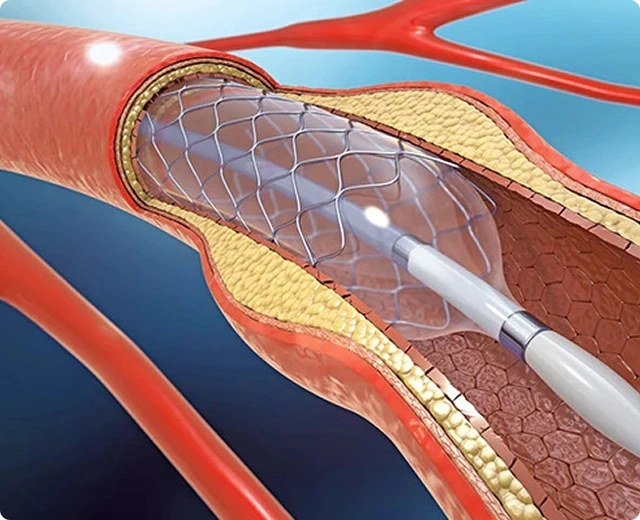Multi-Organ Stenting
Multi-organ stenting is a sophisticated, minimally invasive intervention intended to re-establish blood supply through several critical organs that have been devastated by arterial blockages. With the use of advanced stents, physicians can address intricate conditions at once without the necessity of open surgery. The process significantly shortens recovery time, enhances patient results, and reduces surgery risks. Multi-organ stenting is usually indicated in patients with coexistent vascular diseases, for example, coronary artery disease and peripheral artery disease, or in the case of multiple compromised arterial systems. Our skilled interventional cardiology staff employs state-of-the-art technology to provide precision, safety, and the best long-term outcomes for patients in need of complex vascular treatment.
What is Multi-Organ Stenting Surgery?
Multi-organ stenting surgery is the process of inserting stents into constricted or blocked arteries within two or more organ systems, usually in one session. The purpose is to re-establish normal blood flow to essential organs such as the heart, kidneys, brain, and limbs. It's usually adopted when patients suffer from multi-vessel or systemic arterial disease. Catheters are used to conduct the procedure, with small incisions, and guided by sophisticated imaging technology. Multi-organ stenting provides an efficient, quicker-recovery option to the standard open operations for patients who have extensive vascular disease.

Bypass Surgery vs Multi-Organ Stenting
Multi-organ stenting is less invasive compared to bypass surgery, offering quicker recovery, lower infection risks, and minimal hospital stays, making it an ideal choice for treating multiple arterial blockages simultaneously.
Key Benefits of Multi-Organ Stenting Surgery?
Minimally
Invasive
Small incisions and catheter techniques eliminate the need for open surgery, reducing trauma and promoting faster healing.
Lower
Risk
Minimally invasive procedures carry a lower risk of complications such as infections, blood loss, and prolonged recovery periods.
Quicker
Recovery
Patients often resume normal activities within days rather than weeks, significantly improving their quality of life post-procedure.
Effective for
Multiple Organs
Multi-organ stenting allows simultaneous treatment of blockages in different organs, ensuring comprehensive vascular care in one session.

Radial Artery Intervention
Radial artery intervention is a catheter procedure in which access is made through the radial artery in the wrist rather than through the femoral artery in the groin. Radial artery intervention has changed the face of cardiac and vascular interventions by providing increased patient comfort, reduced bleeding complications, and reduced recovery time. Patients undergoing radial artery intervention are typically able to walk within a short period following the intervention and have reduced post-operative pain. Furthermore, this method lowers the risk of vascular complications and is therefore particularly advantageous for older or high-risk patients. Interventional cardiologists prefer the radial artery approach for multi-organ stenting wherever feasible due to its safety profile and better outcomes. Our centres have expert teams skilled in radial access interventions to ensure patient comfort and safety during the treatment procedure.
When IsRadial Artery Intervention Used?
Radial artery intervention is routinely employed if patients need coronary angioplasty, stent implantations, or multi-organ stenting and are at greater risk for bleeding. It's most useful for patients who are obese, have peripheral vascular disease, or need rapid mobility after the procedure. Radial access is also best for those with pre-operatively operated groin sites or if multiple organ intervention is to be undertaken. It provides quicker recovery, fewer limitations, and briefer hospitalisation. For most instances, radial access facilitates same-day discharge, which makes it a desired approach for contemporary vascular interventions.
What is a Soluble Stent?
A soluble stent, or a bioresorbable stent, is an innovative device that stabilises an artery temporarily before breaking down naturally within the body. In contrast to conventional metal stents that are left permanently within the artery, soluble stents stabilise only during healing. After the artery recovers its original strength and flexibility, the stent is broken down by the body without any long-term implant. This decreases long-term complications such as inflammation and delayed stent thrombosis and facilitates future treatments if necessary. Soluble stents represent a significant innovation in enhancing patient outcomes in coronary and vascular interventions.

Conditions Treated with Multi-Organ Stenting
Coronary Artery Disease
Coronary artery disease narrows heart vessels, reducing oxygen supply. Multi-organ stenting restores blood flow, improves heart function, ensures faster recovery, and lowers heart attack risks with precision, minimally invasive techniques.
Carotid Artery Disease
Carotid artery disease blocks blood flow to the brain, risking stroke. Multi-organ stenting opens arteries safely, enhances blood supply, preserves brain function, and offers quicker recovery with advanced imaging.
Renal Artery Stenosis
Renal artery stenosis limits kidney blood flow, causing hypertension and damage. Multi-organ stenting restores circulation, preserves kidney function, stabilizes blood pressure, and improves overall vascular health with targeted, minimally invasive care.
Peripheral Artery Disease (PAD)
PAD narrows limb arteries, causing pain, ulcers, or gangrene. Multi-organ stenting restores circulation, improves mobility, prevents amputations, and treats coexisting vascular issues using minimally invasive, imaging-guided techniques.
Aortic Blockages
Aortic blockages restrict blood supply, risking organ failure or rupture. Multi-organ stenting reopens arteries, enhances blood flow, prevents major surgeries, and ensures faster recovery using advanced imaging and precision technology.
Mesenteric Artery Disease
Mesenteric artery disease reduces blood flow to the intestines, causing pain, weight loss, or digestive issues. Multi-organ stenting restores intestinal circulation, prevents tissue damage, reduces surgical risks, and promotes faster recovery through precise, image-guided interventions.

Why Choose Our Multi-Organ Stenting Services?
Advanced, minimally invasive procedures
Expertise in handling complex multi-organ vascular diseases
World-class facilities across India, Oman, and Dubai
High success rates and superior patient outcomes
Dedicated post-procedure care and follow-up services

World-Class Multi-Organ Stenting in India, Oman & Dubai
Experience safe, effective, and advanced multi-organ stenting procedures with leading interventional specialists across our internationally accredited centres in India, Oman, and Dubai.
